The 2023 Eliteserien is currently in full swing, and Bodø/Glimt is dominating the top of the table, as we highlighted in a recent analysis piece.
While Glimt appears to be comfortable in leading the title race, the defending champions, Molde FK, have had a somewhat disappointing start to the season. After 12 games, they have suffered five losses, which is three more than their total losses in the entire 2022 season. Molde has enjoyed significant domestic success in recent years, securing five Eliteserien titles since 2011, including two under the guidance of former player and Manchester United legend Ole Gunnar Solskjær.
As the title suggests, in this tactical analysis, which will take the form of a scout report, we will analyse current manager Erling Moe’s tactics at the Aker Stadion and look into why Molde FK finds themselves 15 points off the pace already this season.
Preferred formations

As we can see from the graphic above, Erling Moe mostly opts to use a 3-5-2 formation, which of course can easily become a 5-3-2 should he require. This is the formation that Molde have used over the course of the last two seasons meaning they have implemented a specific tactical style that Moe wants to stick with.
Erling Moe may prefer to use this formation as it provides a balance between defence and attack. The presence of three central defenders offers a solid defensive foundation, reducing the risk of being outnumbered at the back. This ensures better protection against opposing attackers and increases overall defensive stability. Moreover, the central midfielders in the formation provide support both defensively and offensively, contributing to a well-rounded team structure.
Flexibility in attack is another reason why the 3-5-2 formation is favoured by many teams. The two forwards in this formation can work in combination, using their skills and movements to create scoring opportunities. Alternatively, one striker can drop deeper to link play and create space for the other to exploit. The presence of additional midfielders also allows for their involvement in the attack, adding extra numbers and unpredictability to Molde’s offensive play.
David Datro Fofana’s departure
Now that we have understood the formations and tactics that Molde use, a good place to begin this analysis is to highlight the effect that the departure of David Datro Fofana had on the team. The 20-year-old sealed a move to Premier League outfit Chelsea after an impressive season in the Norwegian top flight. Fofana was Molde’s top scorer in 2022 with 15 league goals in 24 games. His departure has left a significant gap in this team that Moe has struggled to adapt to.
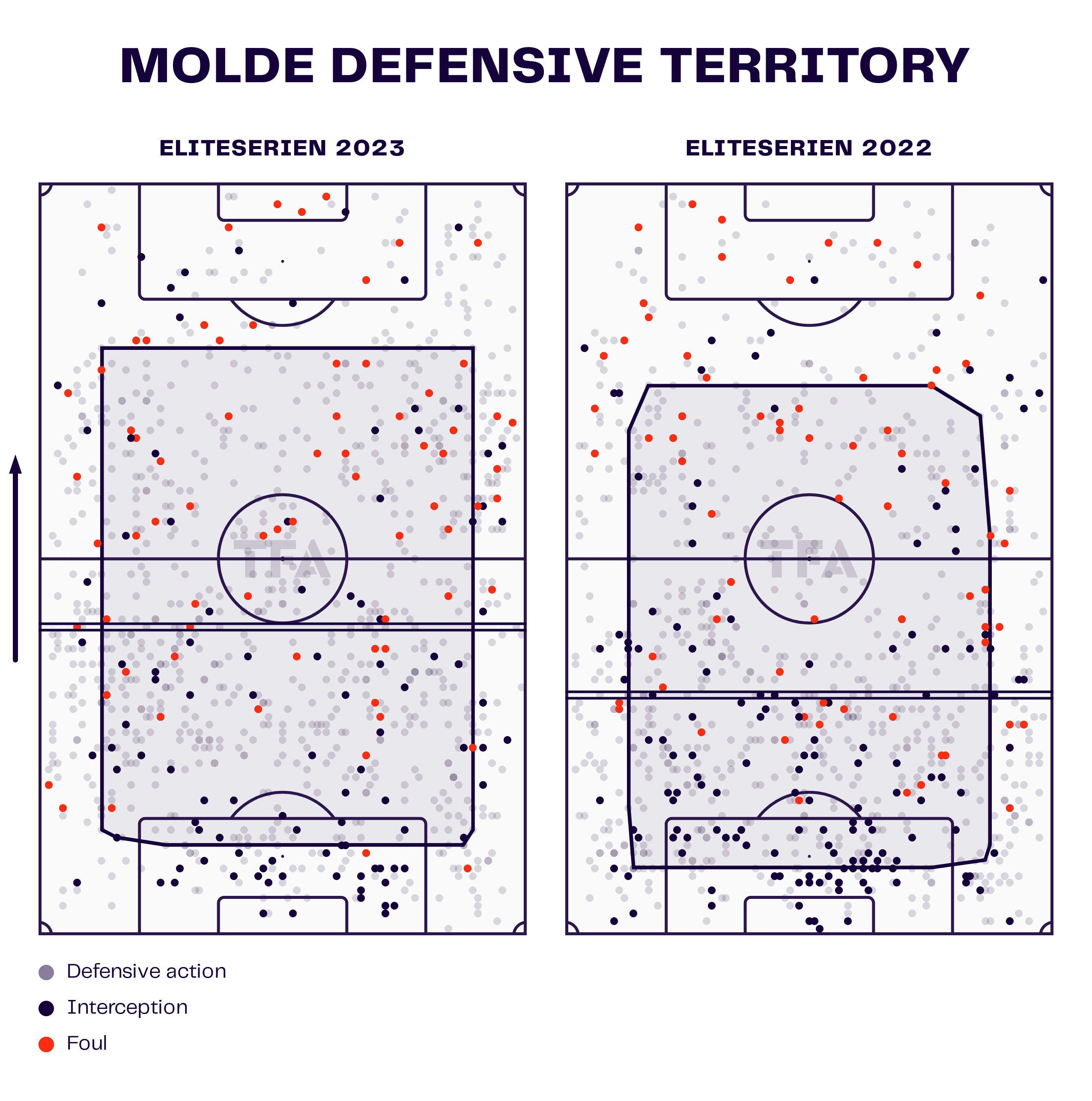
From this data visual above, we can compare the defensive territory of Molde during the 2022 and 2023 seasons so far. We can see quite clearly by the average defensive line that in 2022, MFK were sitting much deeper, additionally, the majority of their defensive actions occurred in a more compact area compared with 2023.
Part of this may be attributed to the pace that Fofana brought to the team. In 2022, Molde could stay much more compact and have a lower defensive line largely due to the fact that Fofana’s speed and ball-carrying ability meant that they would always be able to transition from defence to attack very quickly.
Quick transitions utilising Fofana’s pace
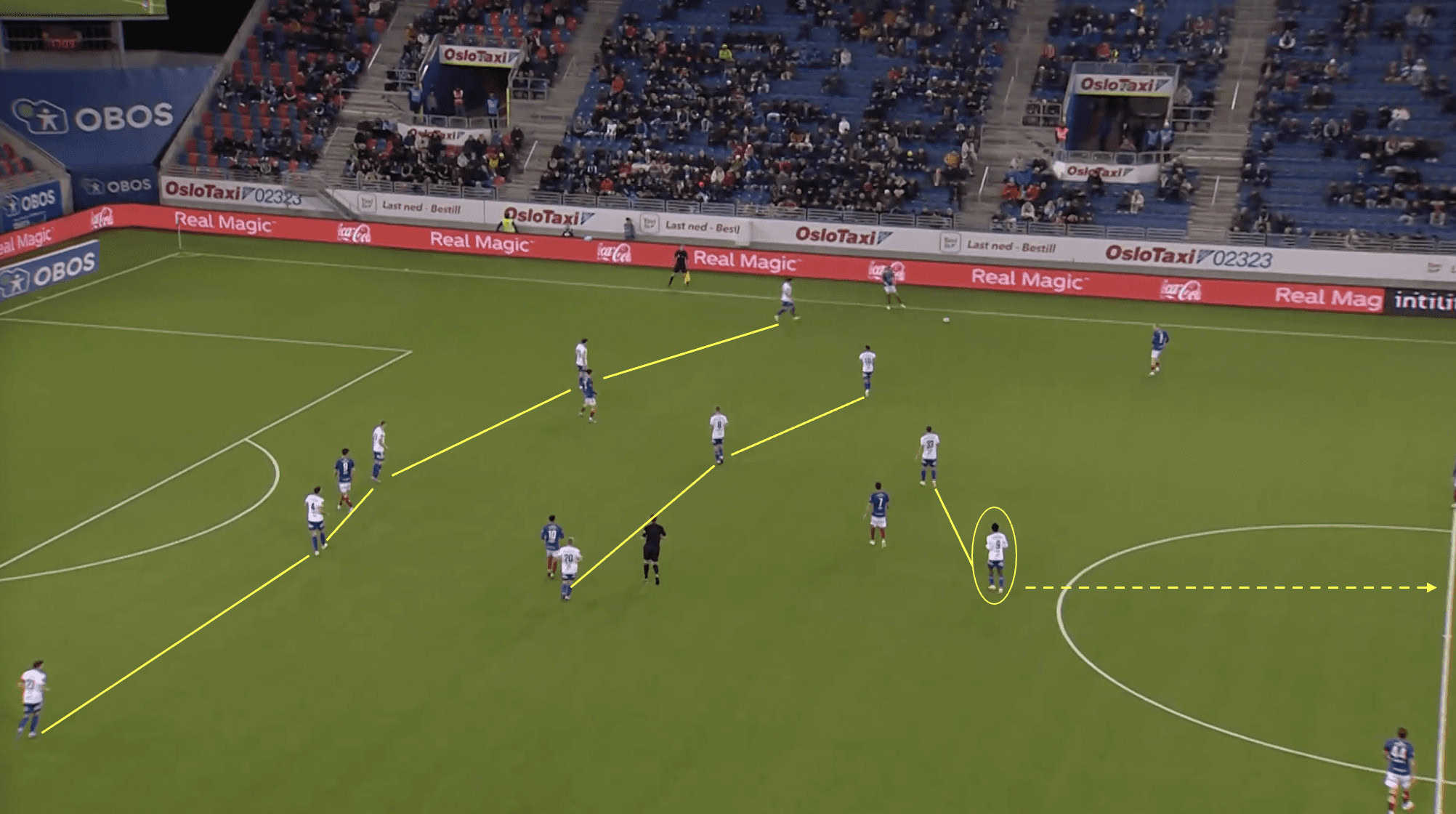
We can see here in Figure 1.1, Molde are in the defensive phase and therefore in their defensive shape of 5-3-2. Fofana is highlighted and he is the player furthest up the pitch for Molde which enables the team to use him as their ‘out’ ball when they regain possession and look to transition quickly.
When the opposing team commits players forward, leaving space behind their defensive line, a quick striker like Fofana can exploit this by making well-timed runs into those gaps. This is a common theme with the likes of PSG who utilise the electrifying pace of Kylian Mbappe to the same effect.
Fofana’s pace also made it difficult for defenders to comfortably maintain possession or build from the back, as they were constantly aware of the striker’s ability to close down space rapidly and apply pressure. This often led to defensive mistakes, turnovers, or hurried clearances, providing Molde with more opportunities to regain possession in advantageous areas.
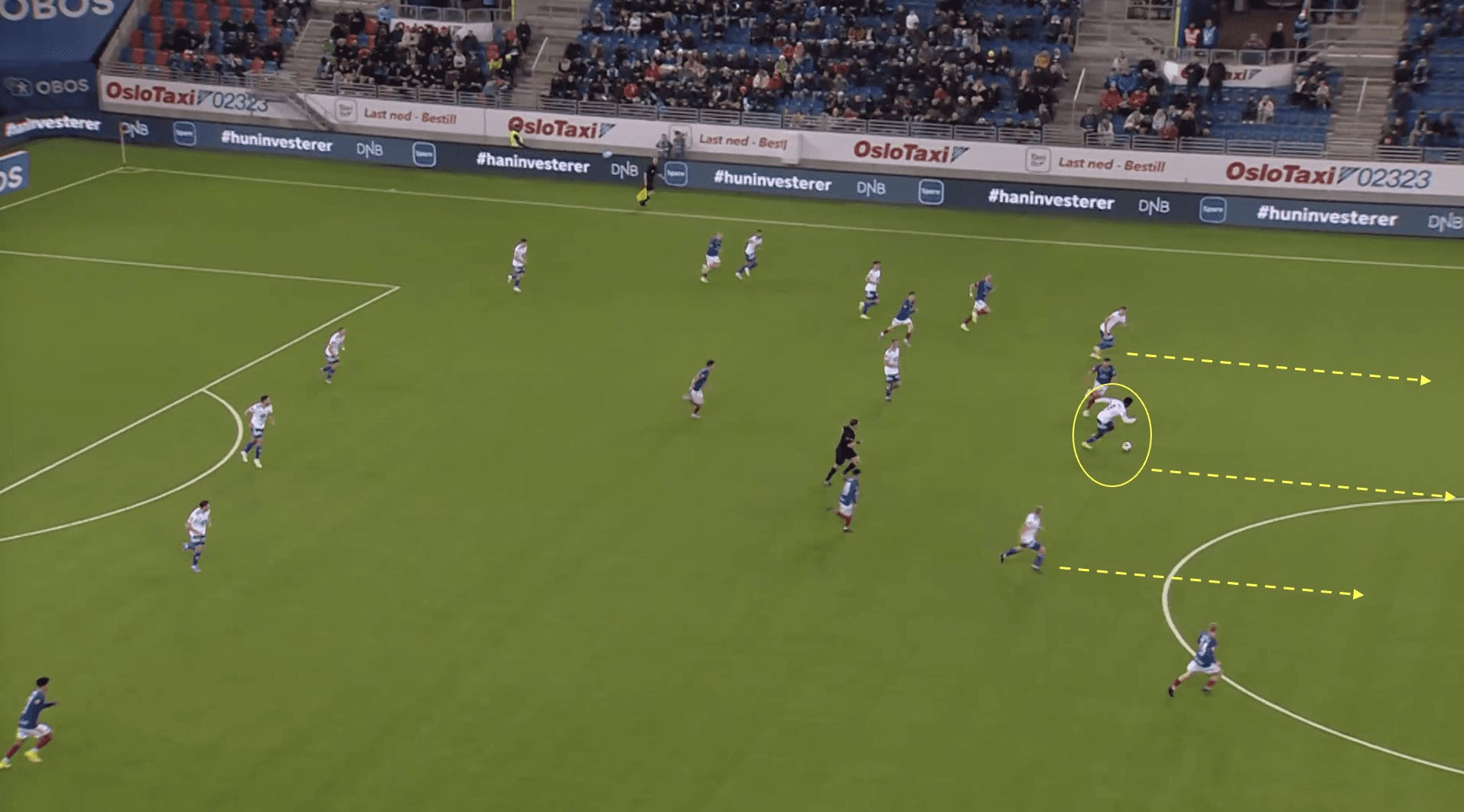
Figure 1.2 showcases Fofana using his speed and ball-carrying abilities to allow Molde to transition from defence to attack quickly. This is something which the team has been lacking this season. By dribbling past defenders, Fofana could create opportunities to travel deeper into the opponent’s territory, opening up spaces for teammates to exploit. This individual skill allowed Molde to bypass the need for intricate passing combinations and gave them a direct route towards the opposition’s goal.
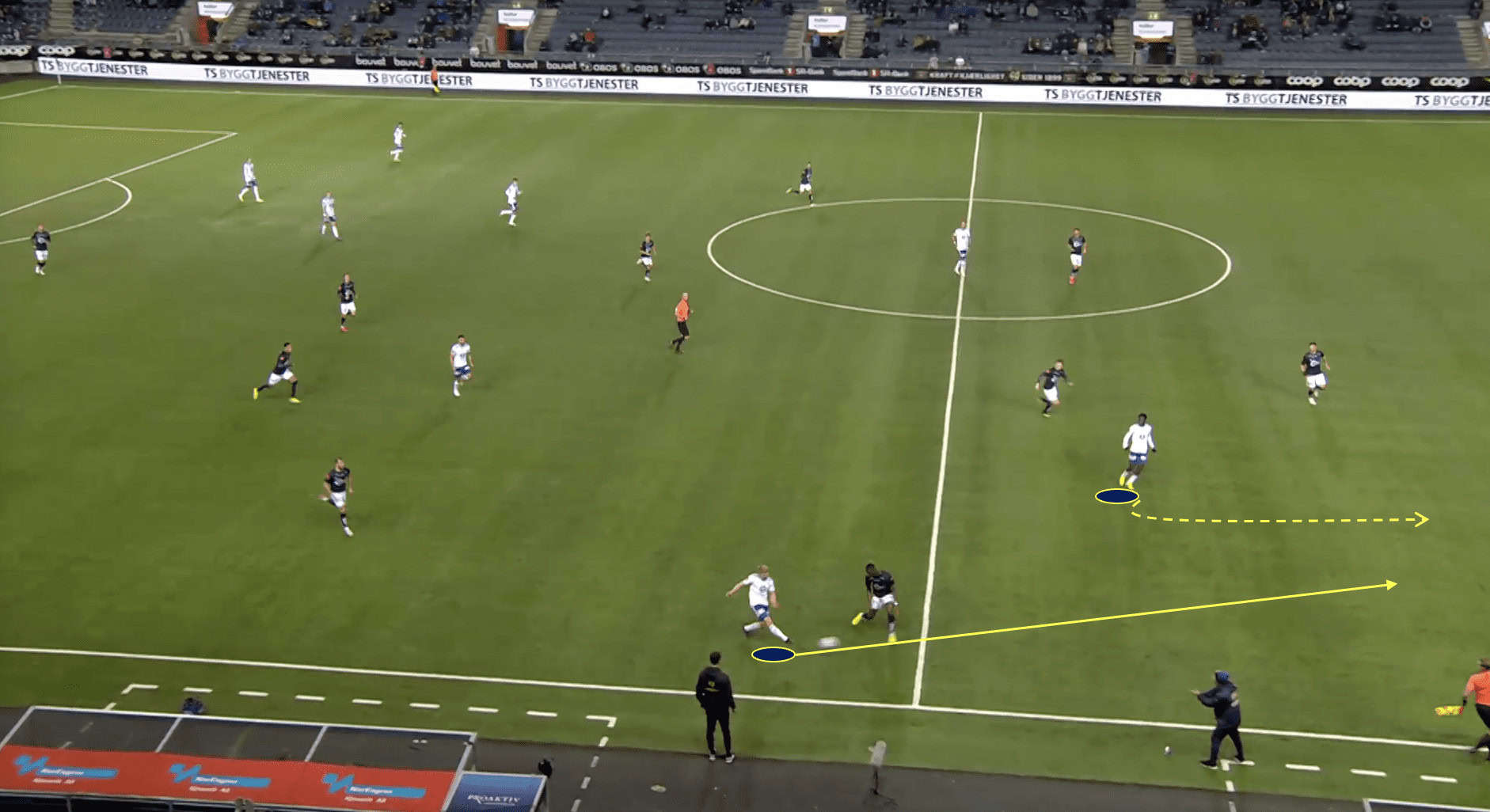
Furthermore, Figure 1.3 shows us how Fofana would often run in behind the opposition’s defensive line. This allowed Molde to either play long passes over the top as shown below in Figure 1.4, or as shown above, play line-breaking passes which allowed the young forward to breeze past the defenders and more often than not, be presented with a 1v1 against the goalkeeper.
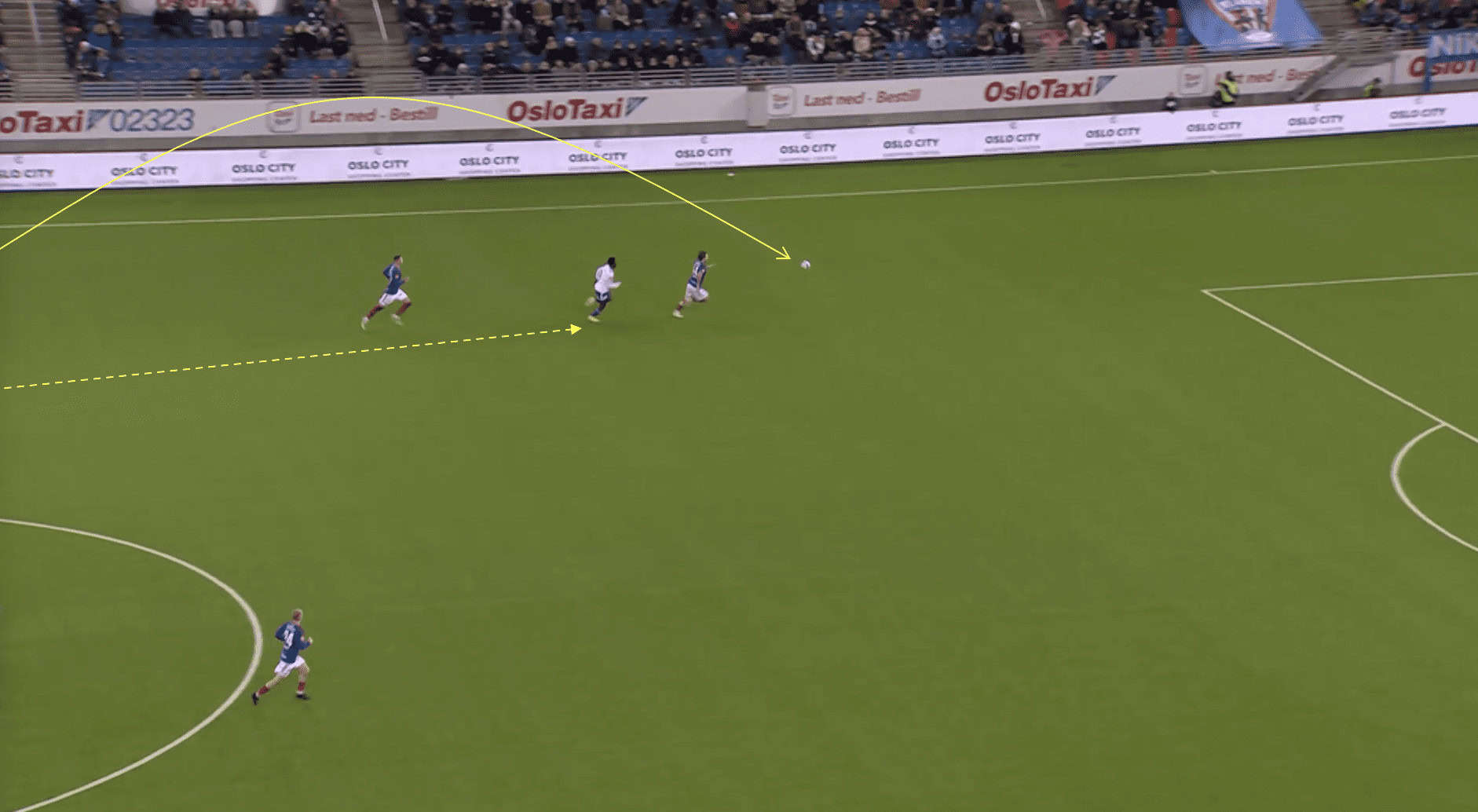
When a team transitions from defence to attack, the primary objective is to swiftly turn defence into offence by capitalising on any potential counterattacking opportunities. Long balls, often played by the defenders or midfielders, serve as a strategic weapon in this transition. They are launched with precision and power, bypassing the opposition’s defensive line, and aimed towards Fofana’s anticipated path.
His ability to accelerate rapidly allows him to gain an initial burst of momentum, catching defenders off guard. As the long ball is played, the young striker recognises the trajectory and anticipates the flight path, positioning himself optimally to exploit the space behind the defence.
Lack of an ‘out’ ball which leads to slower transitions
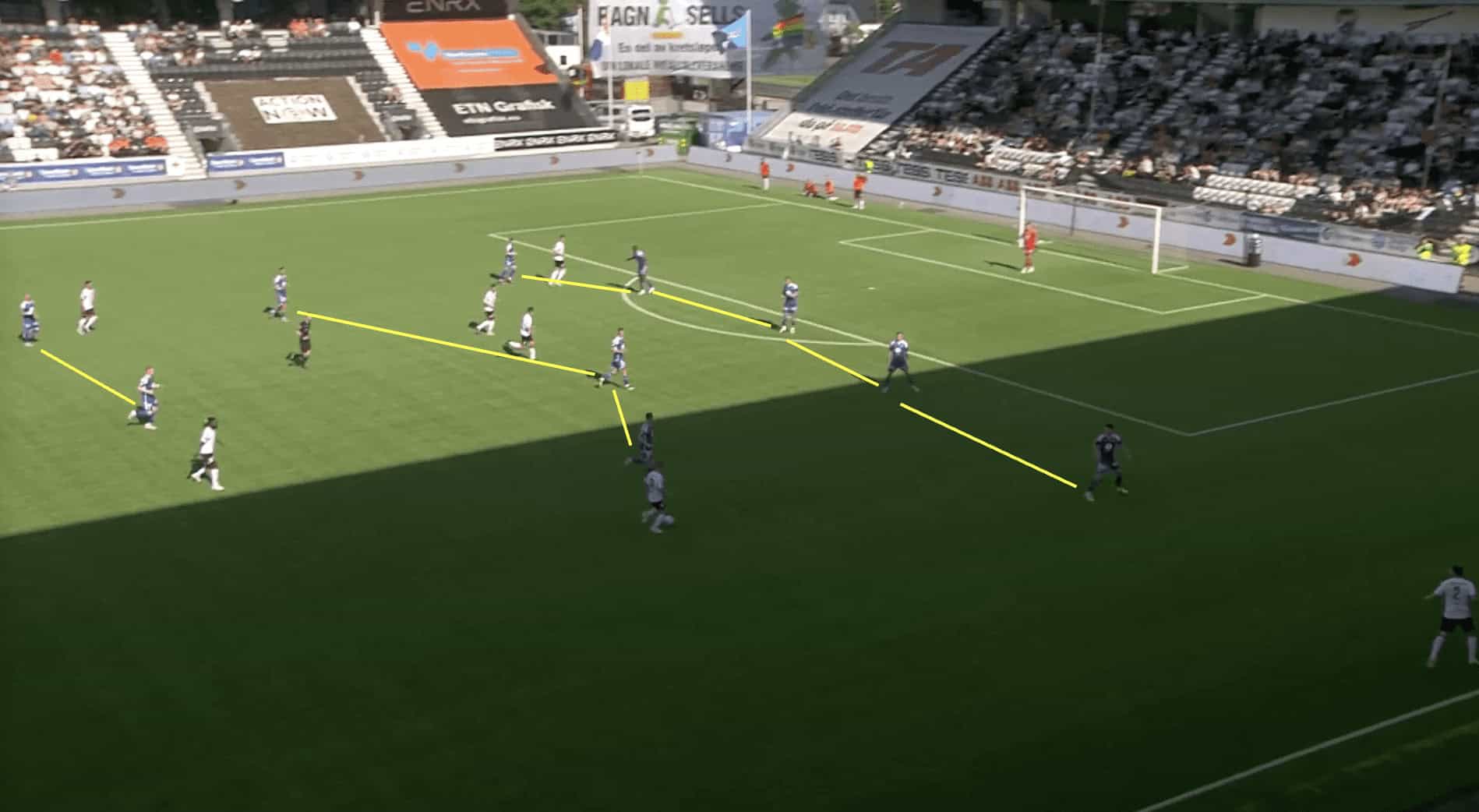
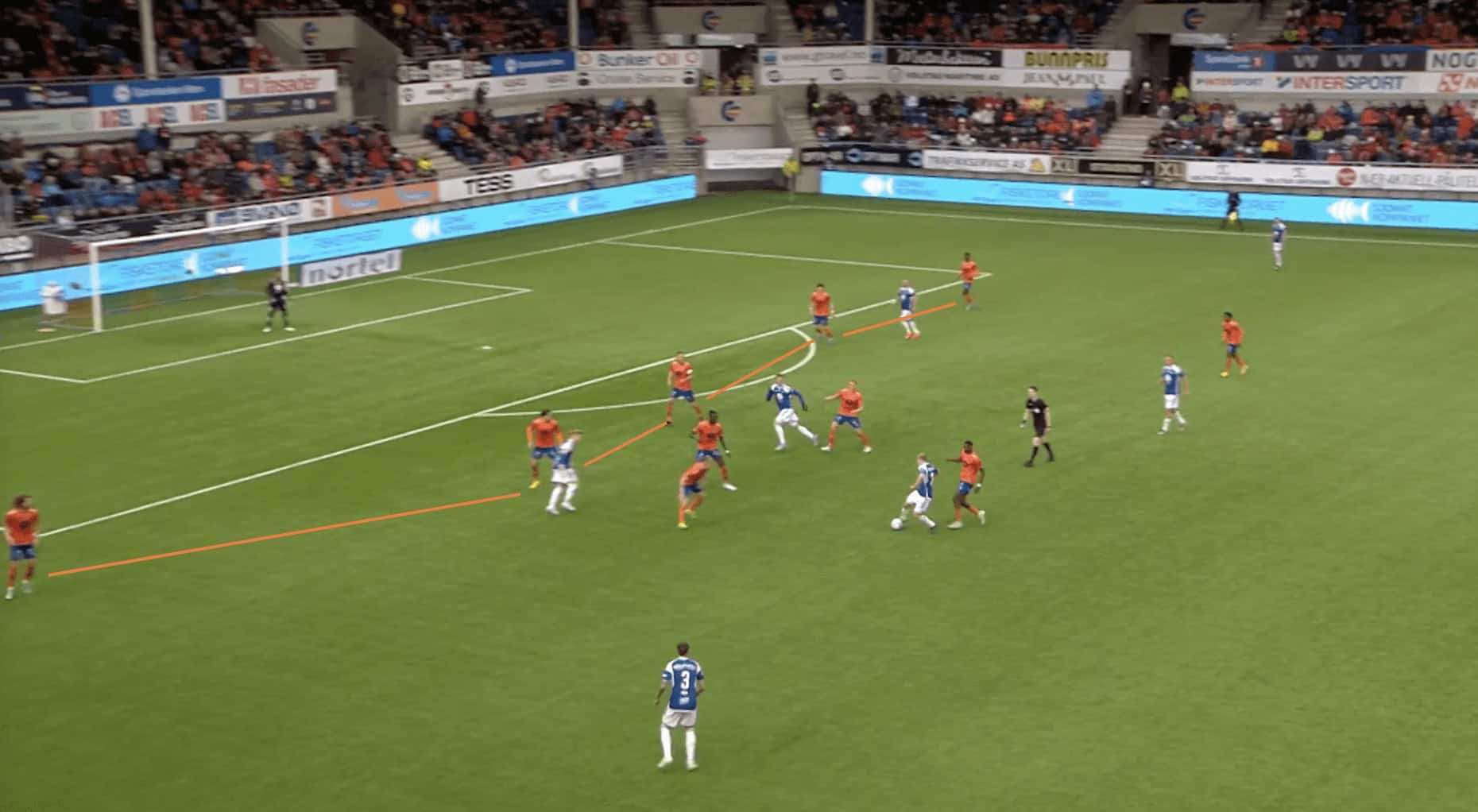
The image depicted in Figure 1.5 captures the current season, showcasing Molde in their familiar 5-3-2 defensive shape. A notable difference from Figure 1.1 is the absence of an apparent ‘out’ ball.
Molde has had to adjust their attacking approach to accommodate their current group of players, which naturally comes with its own challenges. The departure of Fofana has led to a slower transition in their gameplay, resulting in a greater reliance on intricate passing moves to build attacks. However, this allows the opposition to regain their defensive structure, as illustrated in Figure 1.6, making Molde’s task considerably more difficult.
In 2022, Fofana averaged 8.03 dribbles per 90 minutes for Erling Moe’s team. Currently, Veton Berisha averages 0.82 per 90 minutes, Ola Brynhildsen, who has played as a forward this season, averages 3.78, and Magnus Wolff Eikrem, who has also been deployed as a striker, averages 2.24. This significant drop in players carrying the ball translates to a lack of urgency when presented with counterattacking opportunities.
The quick transitions that Molde previously used to their advantage can catch the opposition off guard as they are still transitioning from offence to defence. This is what creates temporary imbalances and exposes vulnerabilities in the defence. However, given that Molde now adopts slower transitions, it provides the opposing team with ample time to recover and regain their defensive stability, which minimises the chances of capitalising on the disorganised defensive shape of the opposition.
Struggling to play through the opposition’s defence
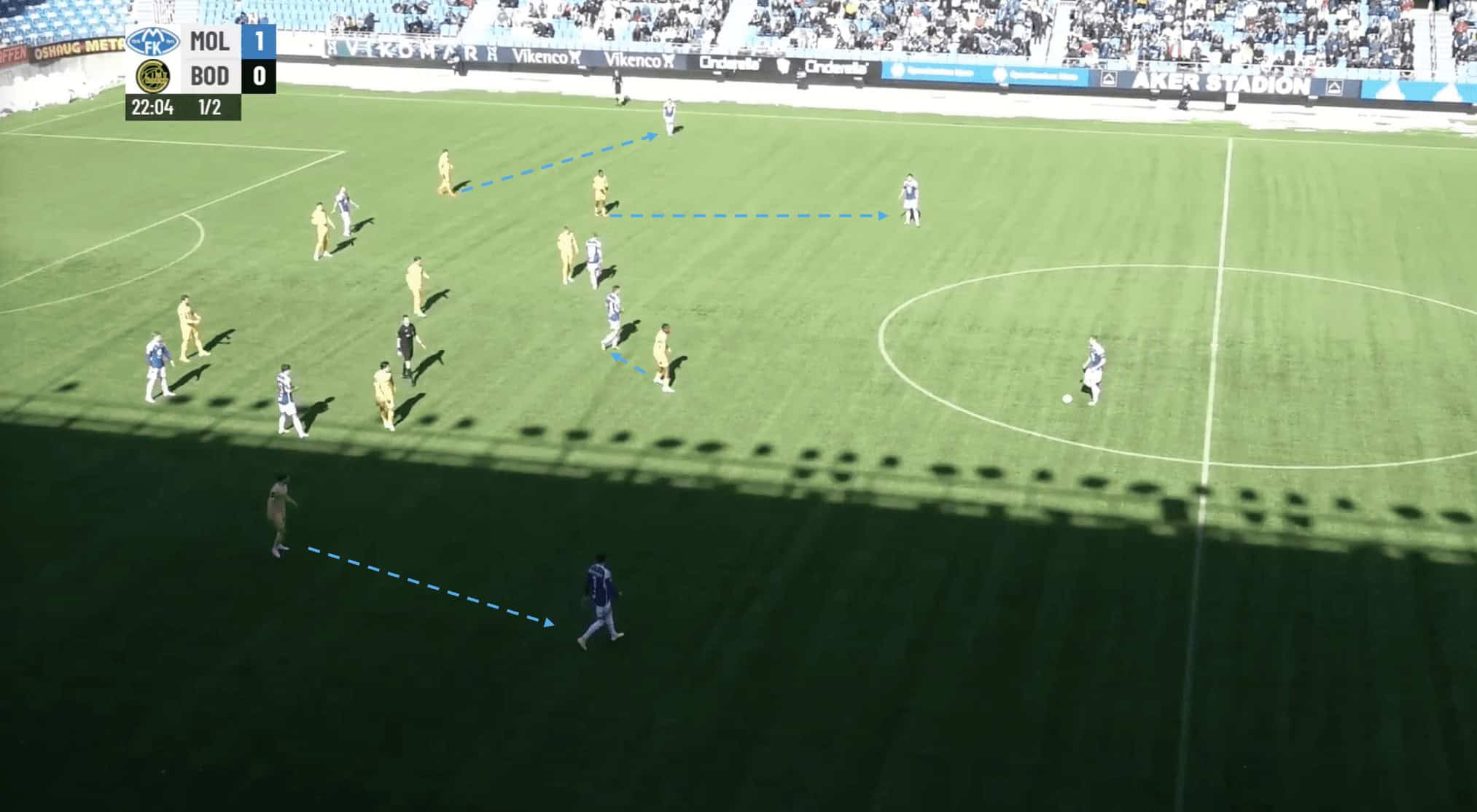
As a result of Molde’s slower transitions, their opponents essentially have time to ‘park the bus’ so to speak. When the opposition has a large number of players defending deep, it reduces the available space for the attacking team to exploit. The congested defensive structure makes it harder to find openings for through passes, intricate dribbling, or quick combinations. As we can see in Figure 2.1, Bodø/Glimt have got all the passing lanes covered and there is nowhere for Molde to play through the lines so they are forced to pass the ball from left to right in the hope of an opening appearing.
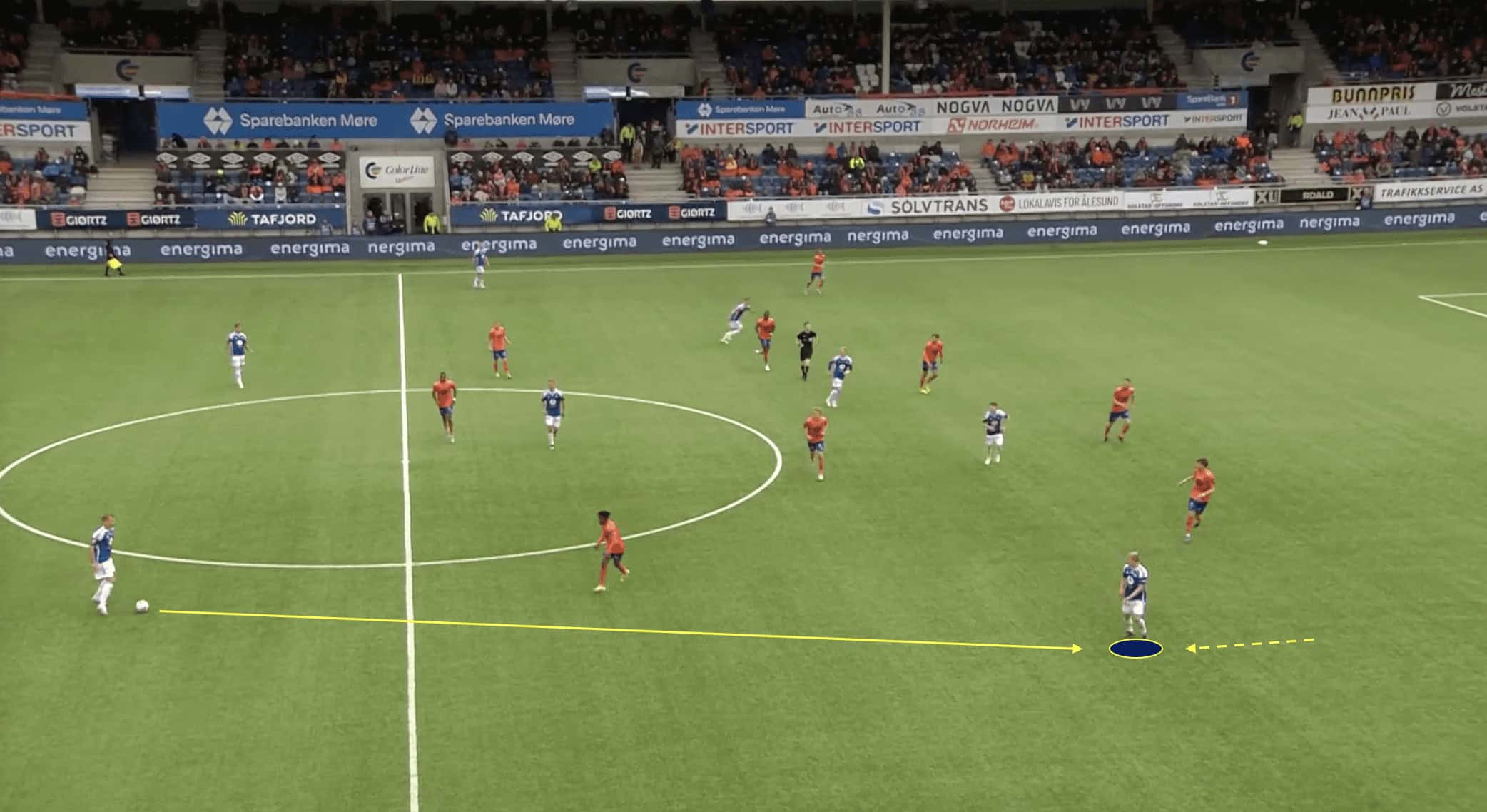
Moreover, there is a lack of players willing to make the runs behind the opposition’s defensive line. As we can see in Figure 2.2, the attacker has made a small movement towards the defender in possession. If he had made a run beyond the defensive line, it would have potentially created space for other Molde players to receive the ball or provide the defender with the opportunity to play a long pass forward. This lack of movement means the attack can become very stagnated and pedestrian at times rather than the dynamic fluidity of 2022.
Without players making runs behind the defensive line, the opposing defenders can easily maintain a compact shape and deny the attacking team any gaps or spaces to exploit, as we can see above. They can focus their attention on marking the players in front of them, knowing that there is no immediate threat of a player running behind them. This makes it difficult for the Molde team to break through the defensive line and create scoring chances.
Additionally, making runs behind the defensive line stretches the opposition’s defence and forces them to make quick decisions and adjustments. When players make these runs, it puts pressure on the defenders to track their movement, potentially creating confusion and gaps in the defensive structure. Without these runs, the opposing defenders can stay organised and maintain a solid defensive shape.
Poor set-piece defending
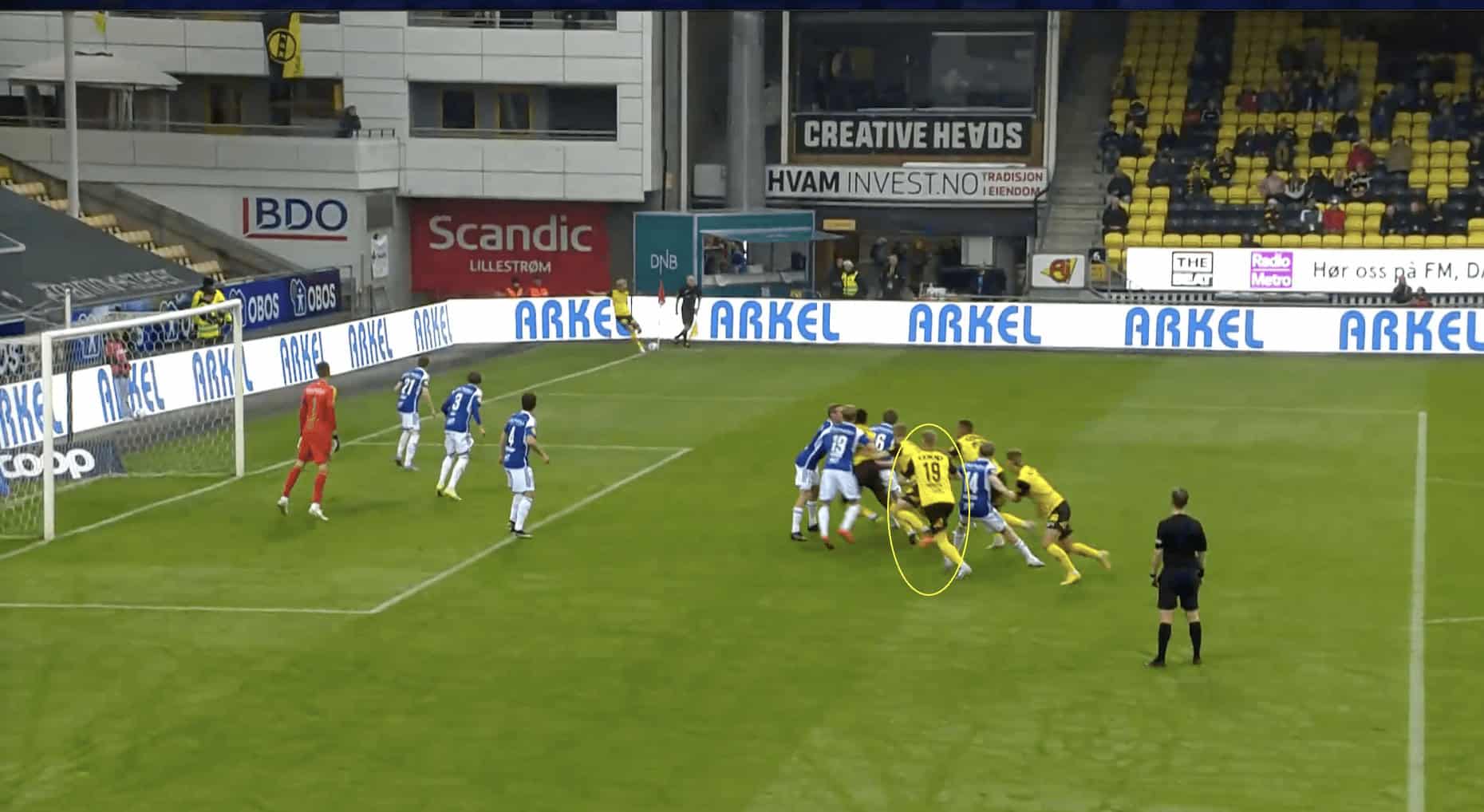
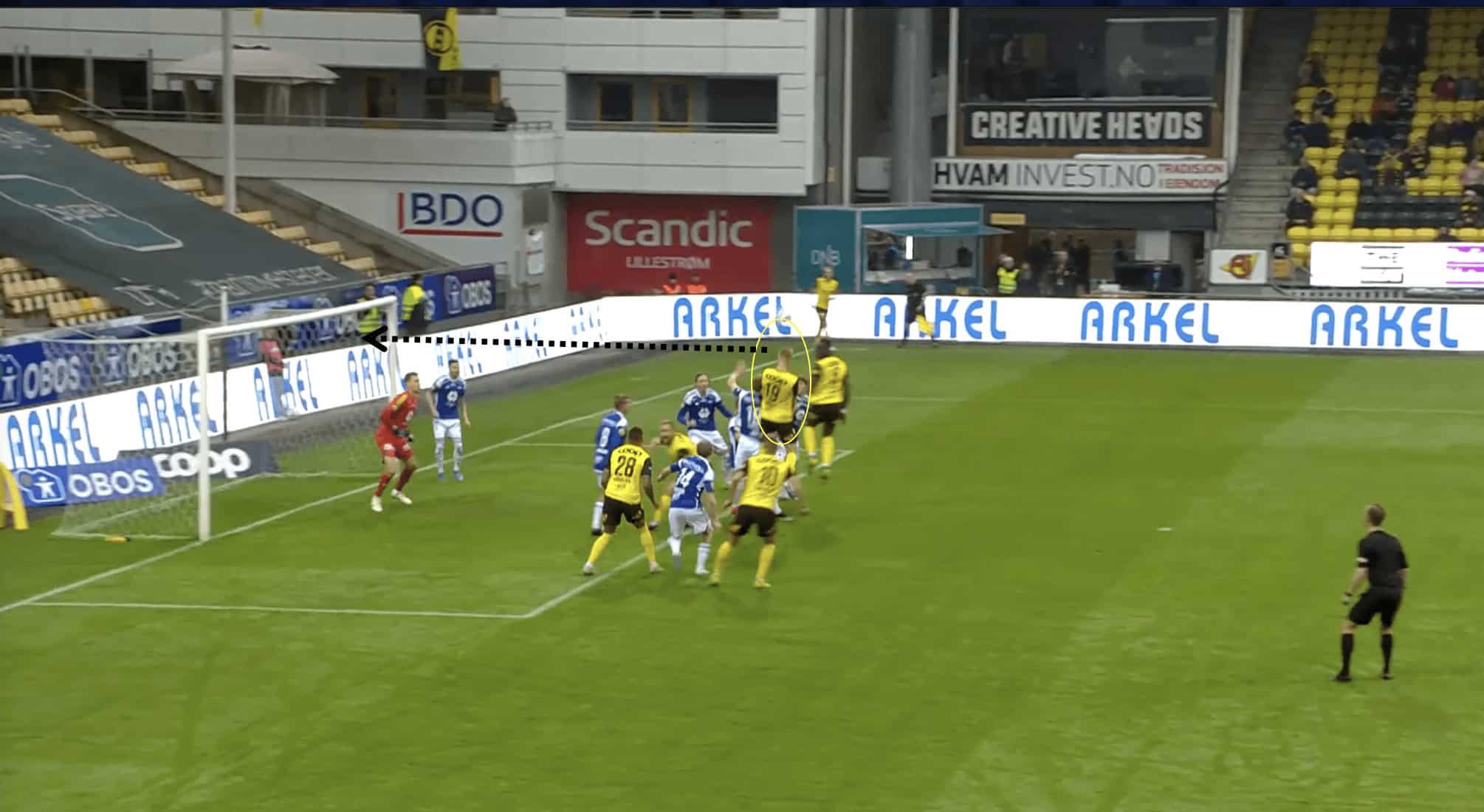
Moving on with the analysis, an area of concern to Erling Moe is likely to be that his team have displayed some questionable defending during set pieces this season. We can see in Figure 3.1 that Kristoffer Tønnessen isn’t being marked by anyone and as a result, has a free header at goal. Molde’s set-up for defending corners usually involves a mix of zonal and man-marking which does appear to occasionally create an element of confusion.
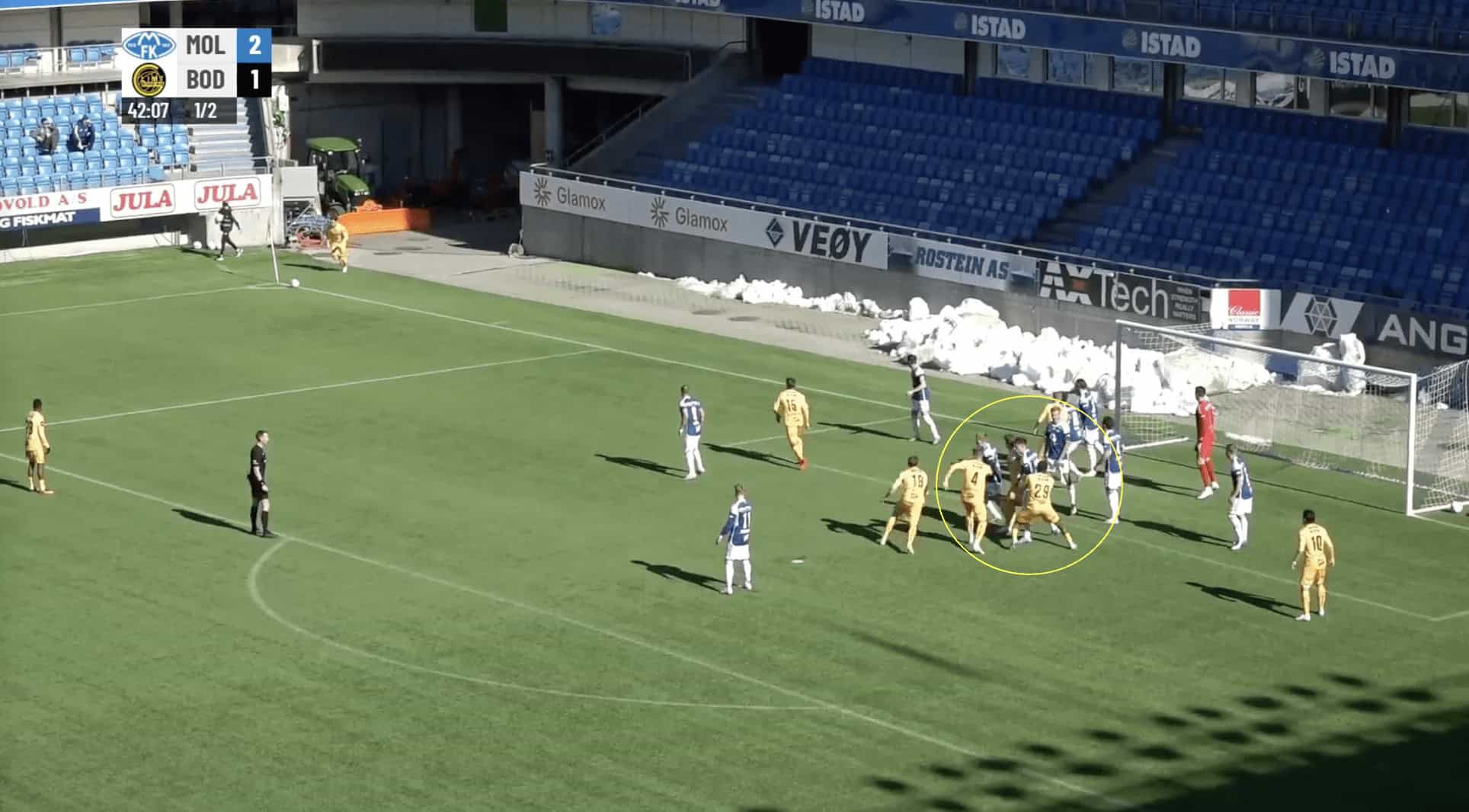
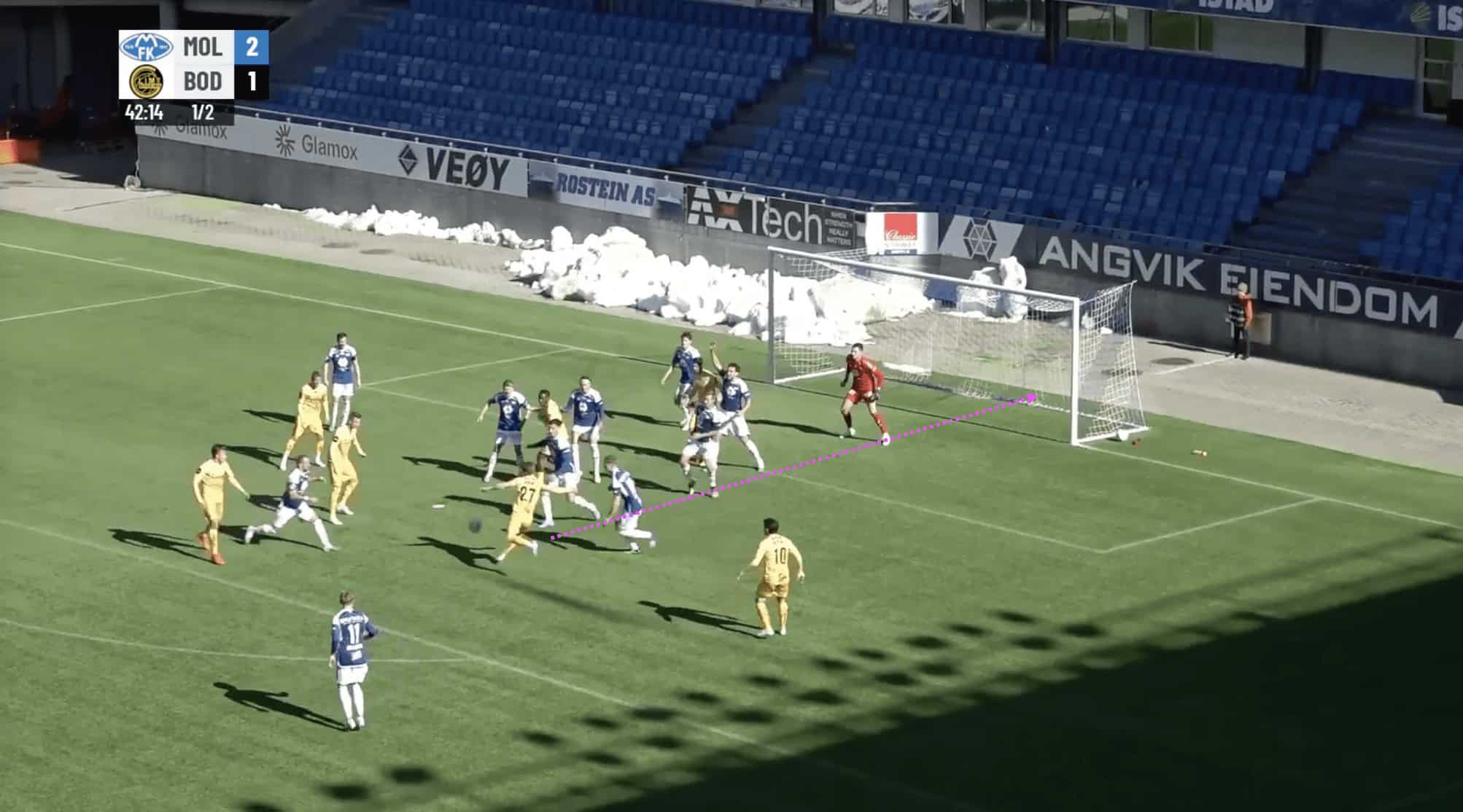
Poor defending creates gaps in the defensive formation, providing attackers with opportunities to exploit these spaces and increase their chances of scoring goals. If opponents are not tightly marked or their runs are not tracked, unmarked players can easily secure free headers or shots on goal, as demonstrated.
In Figures 3.3 and 3.4, Molde attempted to defend a corner but were unsuccessful in clearing the ball away. Consequently, they failed to win the second ball, which landed at the feet of a Bodø/Glimt player, who promptly fired it into the goal. Winning the second ball in such situations becomes crucial as it enables defenders to prevent attackers from gaining possession and executing a quick follow-up shot or a dangerous pass.
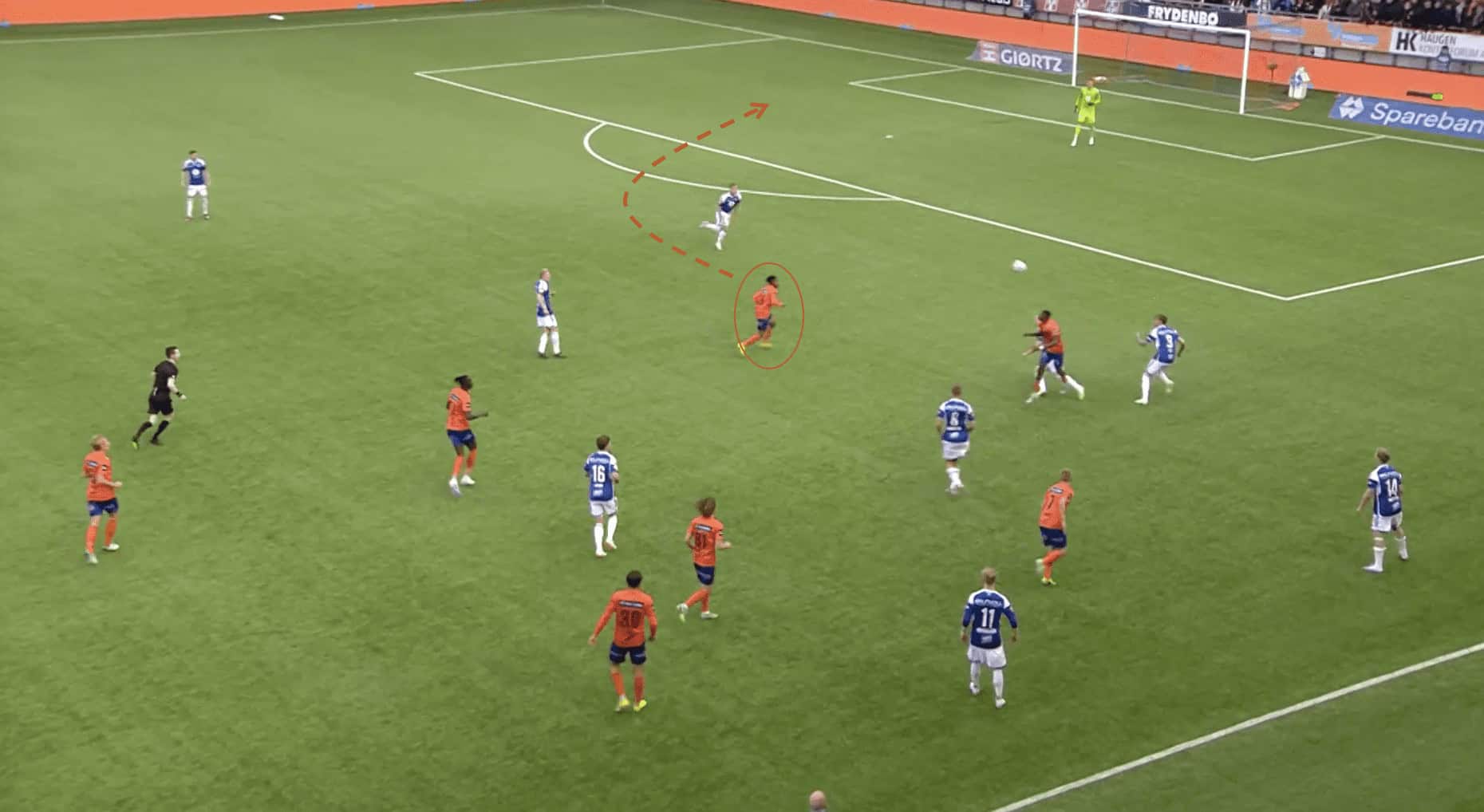
Furthermore, here in Figure 3.5, a similar situation occurred once again. This time will be especially disappointing from a Molde perspective as this goal was conceded from their own throw-in. The opposition attacker actually out-muscles the Molde player and is able to direct the header into the path of a teammate as we can see. Said teammate is then able to carry the ball into the penalty area and place a shot beyond the reach of the goalkeeper.
Inaccurate crossing
Moreover, Molde’s crossing statistics have significantly declined this season. In 2022, they maintained an average of 42% accurate crosses, but in 2023, that number dropped to 34.9%. The ability to execute accurate crosses is crucial for generating goal-scoring opportunities.
When crosses fail to find their intended targets inside the box, it leads to missed chances. Strikers and attacking players depend on precise crosses to effectively meet the ball with headers or shots. However, the lack of accuracy in crosses hampers their ability to connect successfully, thereby diminishing the team’s overall scoring potential.
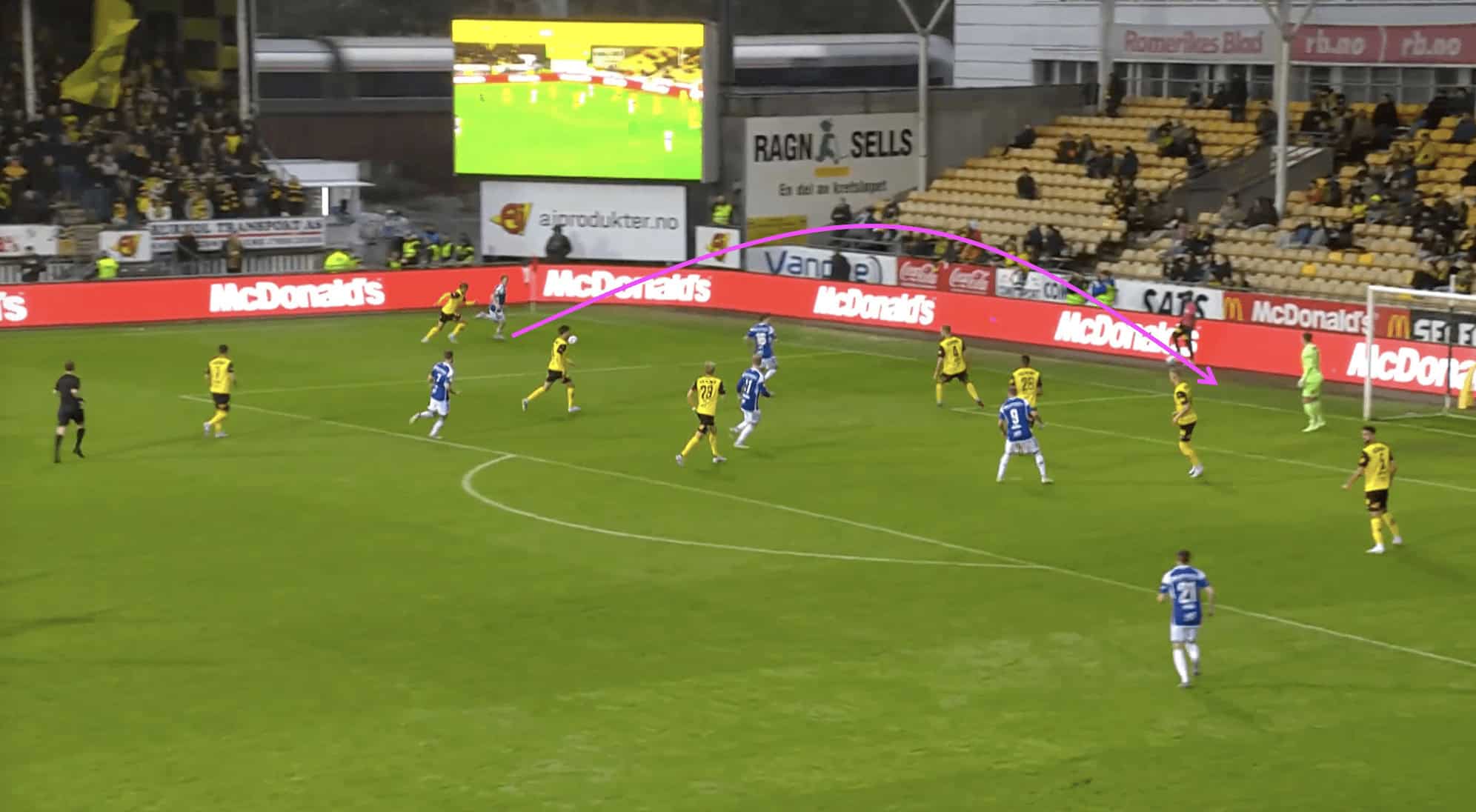
Figure 4.1 shows that Molde has constructed an attack down the wing, positioning themselves favourably to deliver a cross into the penalty area. However, they fail to reach the target, and the opposition easily clears the ball. Consequently, Molde must swiftly transition from attack to defence in order to prevent a counterattack. These missed opportunities and turnovers can tip the game’s balance in favour of the opposition, placing the attacking team at a defensive disadvantage.
Strikers rely on accurate crosses to receive scoring opportunities. Inaccurate crosses deprive them of the service necessary to make runs and convert chances. Without precise deliveries into the box, strikers are unable to fully utilise their positioning, movement, and aerial ability, thereby diminishing their impact on the game.
Conclusion
In conclusion, although Molde has struggled to replicate their previous season’s strong performance, all hope is not lost. They have recently achieved positive results, and Erling Moe will seek to maintain their upward trajectory as the season progresses.
While the title may already be out of reach, Molde can still challenge for European places as long as they continue to adapt to their new style of play. The hallmark of a good team lies in their ability to adjust their approach even in the absence of key players. It may take a season to adapt to the departure of players like Fofana fully but Molde will undoubtedly aim to return even stronger.




Comments